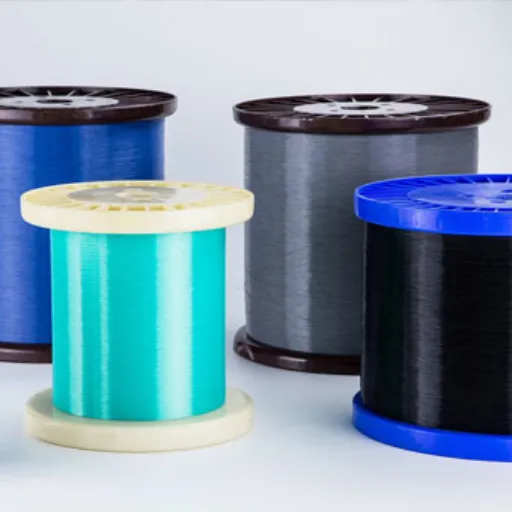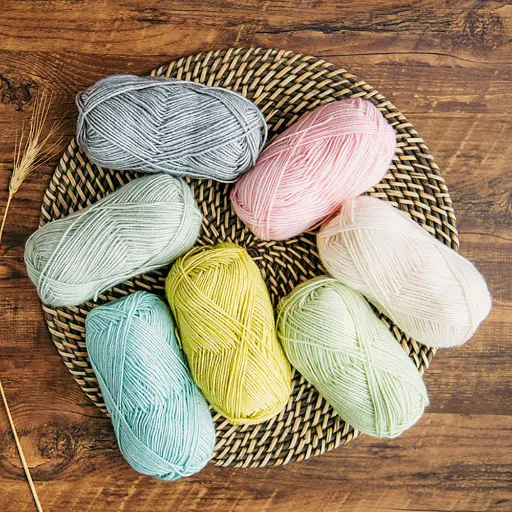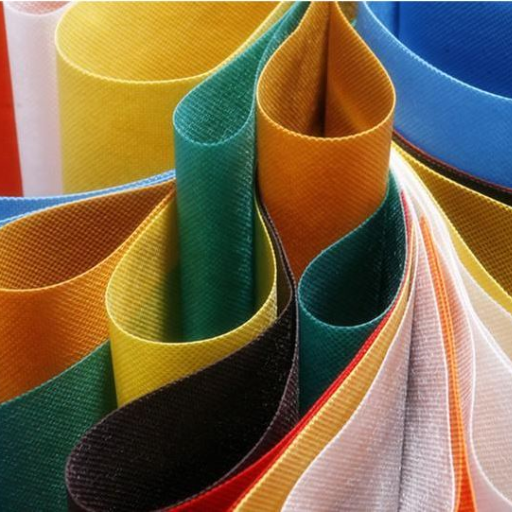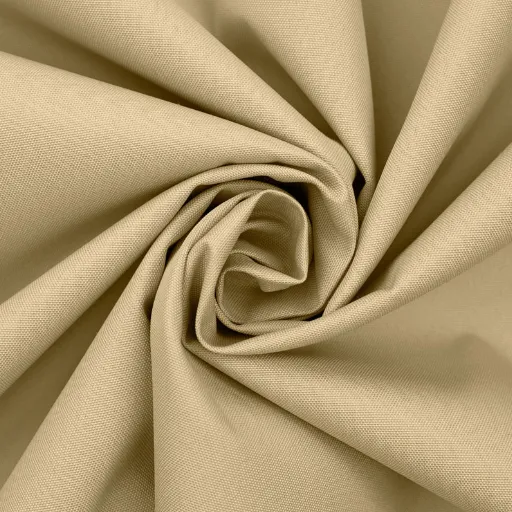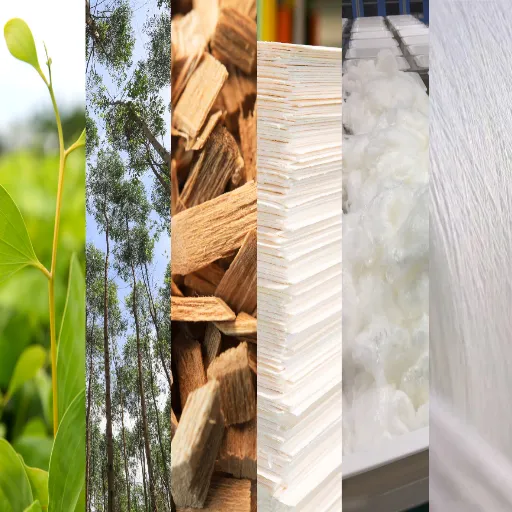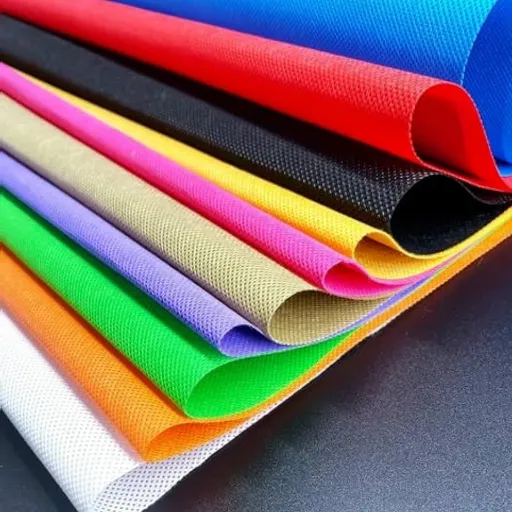An essential stage in completing any fiber artist’s projects is blocking, as unfinished projects become works of art after being blocked. Blocking with wool, being a natural fiber, becomes the headline of High-Brow discussions! Upon reflection, polyester yarn has its own set of complexities and potentials. To give your projects the shape, drape, and structure they are intended to have, while also being careful not to damage the fibers, this synthetic yarn requires a customized docking. This article will showcase expert blocking tips and tricks for polyester yarn, helping you create projects that look better and work more efficiently. Be it garments, accessories, or home décor, décor-this article shall help you to worthy standards!
Understanding the Importance of Blocking Polyester Yarn
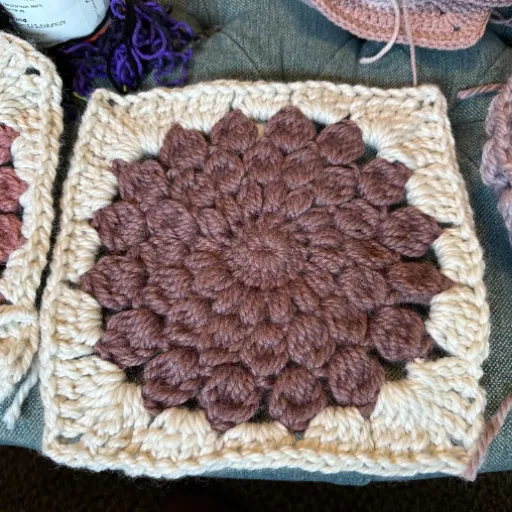
Blocking polyester yarn is essential because it improves the shape, drape, and overall appearance of completed projects. Polyester fibers tend to retain some creases or uneven textures after crafting. The process of blocking helps smooth the surface and set the stitches into place. The result is increased durability and a professional finish for your artwork, ensuring it retains its original shape over time. While polyester does not block exactly like natural fibers, steam or wet blocking will produce the finest results, without any damage to the fiber.
The Role of Blocking in Crochet and Knit Projects
Blocking is essential in giving hand-crochet and knit items a finished, professional touch. It evens out stitches, brings uniformity to patterns, and can emphasize detailed designs, such as those in lacework. When correctly blocked, the piece achieves its proper shape and dimension, becoming precisely what one envisions. This blocking will also help soften the fabric and enhance its drape, making it more comfortable to wear or use. Blocking, in short, is an elemental step in rendering the final touch to knitters’ and crocheters’ products and artworks.
The Best Way to Block Polyester Yarn
⚠️ Important: Treat blocking polyester yarn with care, as it can be susceptible to damage when exposed to heat. When considering the best method for blocking polyester yarn, steam blocking is often the first choice. Measure and shape your project to the exact measurements, laying it flat on a blocking mat or dry surface capable of withstanding some heat. Cover with a damp cloth, ensuring the fabric is evenly moist but not so wet that it drips. The steam iron or the steamer should be used hovering above the damp cloth without touching the yarn directly. Let the release of steam soften the fibers into their configured shape. When the piece is stable, let it cool and dry completely before proceeding. Any more heat and pressure from here on out might just ruin the fibers. With this method, the silky smooth, slick finish of polyester yarn can be achieved without a hitch.
Essential Tools for Blocking Polyester Yarn
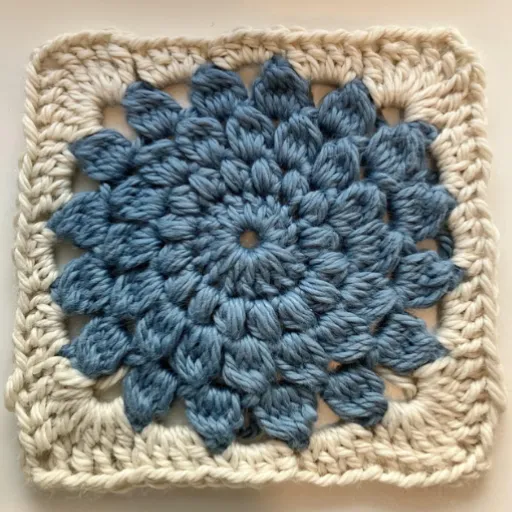
🧷 T-Pins
Helpful in securing the yarn project in place while shaping.
📋 Blocking Mats
Provide a stable, flat surface to pin and shape the piece effectively.
🌫️ Steam Iron or Steamer
Delivers gentle steam to relax the fibers without direct contact.
💧 Spray Bottle
Allows for even misting of water if light dampening is needed.
📏 Measuring Tape or Ruler
Ensures precise measurements while shaping the project.
Blocking Board and Other Essential Tools
When choosing blocking tools for your polyester yarn projects, it is best to select the most suitable tools for blocking. From the very start, you will want to use a fine blocking board for its durability and heat resistance. Have a blocking board with grid lines or pre-marked measurements so you can undertake shaping of your piece with ease. Having such adjustability will also be helpful for several projects of different sizes. Other essential tools include T-pins that will not rust, a good steamer or steam iron with the correct settings for synthetic fibers, and a pair of measuring tools that are safe for fabrics. By combining these tools with the proper technique, you can ensure increased confidence from the beautification and fortification of your final piece.
Optional Tools for DIY Blocking
Above the requisites, some optional equipment can be used to beef up the blocking process and make it more efficient. Blocking wires are immensely helpful for creating straight edges and regular shapes when working with lacework or intricate patterns. Foam mats with grid patterns add precision to ensure your piece is in line. Another convenient way to dampen could be to use a spray bottle filled with water or a fabric-safe blocking spray, to avoid over-wetting the material. If one often handles large projects, a folding table set aside for them would save time and ease the strain on the body, giving ample space for work and adjustments as needed. Integrating these optional items into your work setup makes the entire process more streamlined, allows you to achieve professional results, and also enhances the DIY blocking experience.
Step-by-Step Guide to Blocking Polyester Yarn
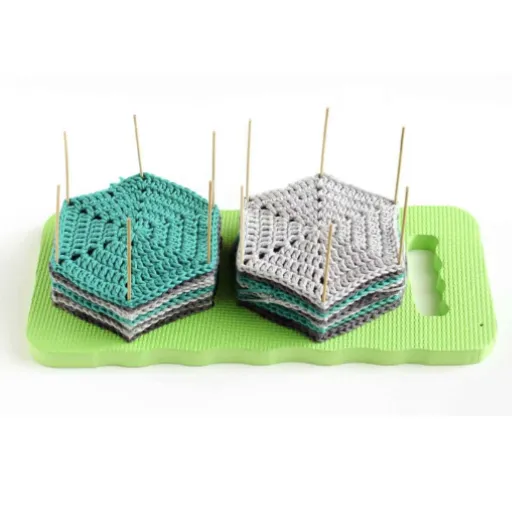
Step 1: Prepare Your Workspace
Choose a flat, clean surface such as a blocking mat or foam board. Ensure your area is sufficiently large for your project and free from dirt or debris.
Step 2: Lightly Dampen the Yarn
Mist the yarn with water from a spray bottle or blocking spray that is safe for fabric. Making the yarn heavier can soften the polyester fibers.
Step 3: Pin the Project
Your project lies flat, and you gently begin shaping it to the desired dimensions. Rust-proof pins or blocking wires are then used to evenly pin down the edges of the piece, ensuring it remains in its set form.
Step 4: Allow Time to Set
Let your project dry thoroughly while it is still blocked in place. Polyester fiber dries much quicker than other fibers; just make sure it is 100 percent set or dry before you unpin it, or else it will not keep its shape.
Step 5: Inspect the Result
Once it is scorched, carefully remove the pins, then check the edges and the shape of the project, adjusting it slightly if needed.
Preparation: Setting Up Your Project
Setting up your project for polyester yarn blocking requires preparing all the necessary materials. A flat and clean surface should be covered with the blocking board or blocking mat, rust-free pins, a spray bottle filled with water, and a measuring tape to ensure correctness. Now, gently place your project on the surface to block, smooth, and shape it to the desired dimensions. Ensure you check the size and alignment with your measuring tape. Pin the edges using rust-free pins, spacing them evenly to allow for equal tension. Preparation shall thus enable the effective blocking of the project while preserving its integrity.
Drying and Finishing Your Blocked Project
Once you have grabbed this project on your blocking surface, it needs to dry completely before proceeding to the next steps. Drying time depends on the material, as well as the humidity and ventilation in your space. However, never hurry; let the fibers dry completely to ensure they retain their shape. Ventilate the space well, or place the project beside a gentle fan, to expedite drying. Do not, under any circumstances, use direct heat; it will ruin delicate fibers.
Once dry, gently remove your pins, being careful not to disturb the shape. Check your piece to ensure it has maintained the toilet shape and increased dimensions during the blocking process. There may be occasions when your project needs a slight steam, but always do a heat test in a corner first to avoid any heat damage. With a bit of TLC at this stage, your blocked project is set to flaunt its beauty and function.
Common Mistakes to Avoid When Blocking

❌ Critical Mistakes to Avoid
- Using Excessive Heat or Moisture – Excessive steam or water can irreversibly damage a few fibers. Always double-check the care instructions of your material.
- Stretching the Fabric Too Much – When overstretched, your project can lose its shape, rendering its fibers weak and fragile. Stretch just enough to the desired measurement without risking the life of the piece.
- Skipping a Test – Not testing a small section may lead to damage to your project or an undesired result. Hence, always do a test blocking on a small, inconspicuous section of your project.
- Using Incorrect Pins or Tools – Using pins that rust or are blunt typically destroys your fabric; therefore, it is best to use rust-proof, sharp pins or blocking wires for the material.
- Not Allowing Enough Drying Time – If you remove your pins before the project is dry enough, it will lose its shape. On the other hand, when it is scorched, you may unpin it.
Overheating the Yarn: What to Watch For
Heating yarn too much during blocking will ruin it forever, especially if it is a synthetic or a delicate fiber. High heat melts acrylic and other synthetic yarns or robs them of their elasticity, resulting in an improper finish. In contrast, wool or other natural fibers may felt and shrink when exposed to excessive heat. To avoid this, always check temperature recommendations for your yarn and choose a lower heat setting on the steam option. Keep the iron a few inches away from your work or use a pressing cloth to avoid direct heat on the yarn, thereby preventing damage and ensuring that your project looks as you intended.
Skipping the Pins: Importance of Secure Shaping
Secure shaping is essential for structure and durability when finishing any knitting or crochet project. Many may wonder, “Is it okay to skip using pins during blocking?” It might seem quicker or easier to skip the pins, but the edges may end up uneven, the dimensions may be warped, or the finish may appear less professional. Pins provide the correct tension to hold your piece while it dries, ensuring it maintains its intended shape and size. Additionally, secure shaping allows the pattern to open adequately and reveal its true beauty; lace and cables, for example, require this. Always block using rust-proof pins and a proper blocking surface that supports your project while keeping its form intact.
Expert Tips for Optimal Blocking Results

🛠️ Use the Right Tools
Set up in a quality blocking mat, use stainless or rustproof pins, and, of course, a spray bottle or heat source for even results. Through their use, the process becomes much more efficient while simultaneously protecting your project.
🧼 Work with Clean Materials
For final pieces, cleanliness is a must before setting to avoid anything: dirt, accidental stains.
🧶 Follow Fiber-Specific Techniques
Different fiber types react differently to moisture and heat. Determine the best method for blocking the particular fabric you are working on: use high steam for wool or wet for cotton.
🕸️ Be Gentle with Delicate Patterns
Precious, lace-like woods are easily damaged by even slight tension; excessive tension may cause tearing or severe deformation of the pattern.
⏰ Allow Ample Time to Dry
Only once the garment or piece is completely dry can the pins be removed without the piece losing its shape or shrinking and warping.
Testing Methods on Swatches
Before blocking your finished project, it is always advisable to test your chosen method on a small swatch of your fabric. This lets you see how the material will react to moisture, heat, and tension without placing the entire piece at risk. First, knit or crochet a small sample piece of fabric using the same yarn and stitch pattern you have chosen for your main project. Use this sample to test different types of blocking, such as wet blocking, steam blocking, or spray blocking. Carefully note any changes in the fabric’s texture, stitch definition, and dimensions. Such testing will ensure that you make the best decision regarding blocking, which guarantees the safety of your garment or design and allows it to be beautifully preserved. This small act can save you time and ensure the best results.
Using a Damp Cloth for Added Protection
Using the damp cloth method effectively protects delicate fibers during blocking. To do so, soak a clean, lint-free cloth, such as cotton or muslin, in lukewarm water. Wring out the fabric to retain its moisture without excessive wetness. This damp cloth can then be utilized as a curtain between your wool or crochet project and anything that may shed direct heat onto it if steam blocking is chosen. This protective action minimizes the risk of damage to sensitive fibers, allowing shrinkage or distortion to relax into its original shape if it occurs. The key to good results is to ensure that the blocking cloth is evenly spread and that the fabric is not overexposed to heat.
Reblocking: When and How to Do It
Reblocking is warranted to return a piece that has lost its shape over time or during washing. I usually reblock when I see uneven stitches or when the piece just isn’t lying properly. The reblocking process involves slightly wetting, then reshaping the project to the appropriate dimensions, and either pinning it or threading blocking wires through it to keep it so until it dries. This restores the structure to its original intended state and ensures that it looks the part.
Reference Sources
The following five professional and authoritative sources are to aid you in verifying and enhancing your article on “How to Block Polyester Yarn.” These sources explain synthetic yarns, their properties, and the techniques involved:
| Source | Title | Relevance |
|---|---|---|
| Nature.com | Yarn tension control technique for improving the polyester soft winding process | Understanding the effects of yarn tension on polyester yarns during processes like blocking |
| EBSCOhost | Enhancement of Printing and UV-Blocking Properties of Polyester and Polyester/Wool Fabrics by Aminolysis | Explores polyester fabric properties, including behavior under heat and steam |
| ScienceDirect | Coatings for technical textile yarns | Covers yarn treatment and coating techniques used on polyester yarns |
| Taylor & Francis | Continuous filament and texturized synthetic yarns | Overview of synthetic yarns, including polyester, and their structural properties |
| ScienceDirect | Conversion of fibre to yarn: an overview | Manufacturing and processing of synthetic yarns relevant to blocking techniques |
Frequently Asked Questions (FAQs)
❓ What is the best way to block polyester yarn?
The best way to block polyester yarn involves using steam blocking methods. This technique allows you to gently reshape your crochet items without damaging the fibers. By using a steam iron or steamer, you can apply steam to your project and pin it into the desired shape, ensuring it retains its shape well once dry.
❓ How do you block a crochet blanket made with polyester yarn?
To block a crochet blanket made with polyester yarn, first, wash it according to the care instructions. Then, lay it flat on a blocking board, pinning the edges to achieve the desired shape and size. Use a steam iron to carefully steam the surface carefully, ensuring not to scorch the yarn.
❓ What are the benefits of blocking crochet projects?
Blocking crochet projects offers several benefits, including enhancing stitch definition, preventing curling, and helping your work maintain its shape. This is particularly important for projects with intricate patterns, as blocking can highlight the details and improve the overall appearance.
❓ Can you use wet blocking methods for polyester yarn?
While wet blocking can be effective, it’s generally not recommended for polyester yarn, as it may not hold its shape as well as other fibers, such as wool or cotton. Instead, steam blocking is a more suitable method, as it reshapes the yarn without saturating it.
❓ What tools do I need for blocking crochet items?
To successfully block your crochet items, you will need a blocking board, pins, and a steam iron or steamer. These tools will help you achieve the desired shape and size while ensuring your projects are neatly finished.
❓ How does blocking help with granny square crochet projects?
Blocking is an essential step for granny square crochet projects, as it helps even out the squares and ensures they fit together seamlessly. By stopping each square, you can achieve a uniform size, making it easier to assemble your final piece.
❓ What is the difference between wet and dry blocking techniques?
Wet blocking involves soaking your crochet pieces in water and then shaping them, while dry blocking typically uses steam to reshape the yarn. For polyester yarn, dry blocking is usually preferred as it minimizes water damage and maintains the integrity of the fibers.
❓ Are there specific blocking techniques for acrylic yarn?
Acrylic yarn can be blocked using similar methods to those for polyester, but it responds particularly well to steam blocking. You can pin acrylic projects to a blocking board and use steam to shape them without risking damage to the fibers, making it a versatile option for many crochet techniques.
❓ What is the method to block crochet work made with recycled polyester?
The method to block crochet work made with recycled polyester is similar to that of regular polyester yarn. Use steam-blocking techniques to reshape your projects while minimizing excessive moisture. By carefully applying steam, you can ensure your crochet pieces maintain their desired shape and size.








